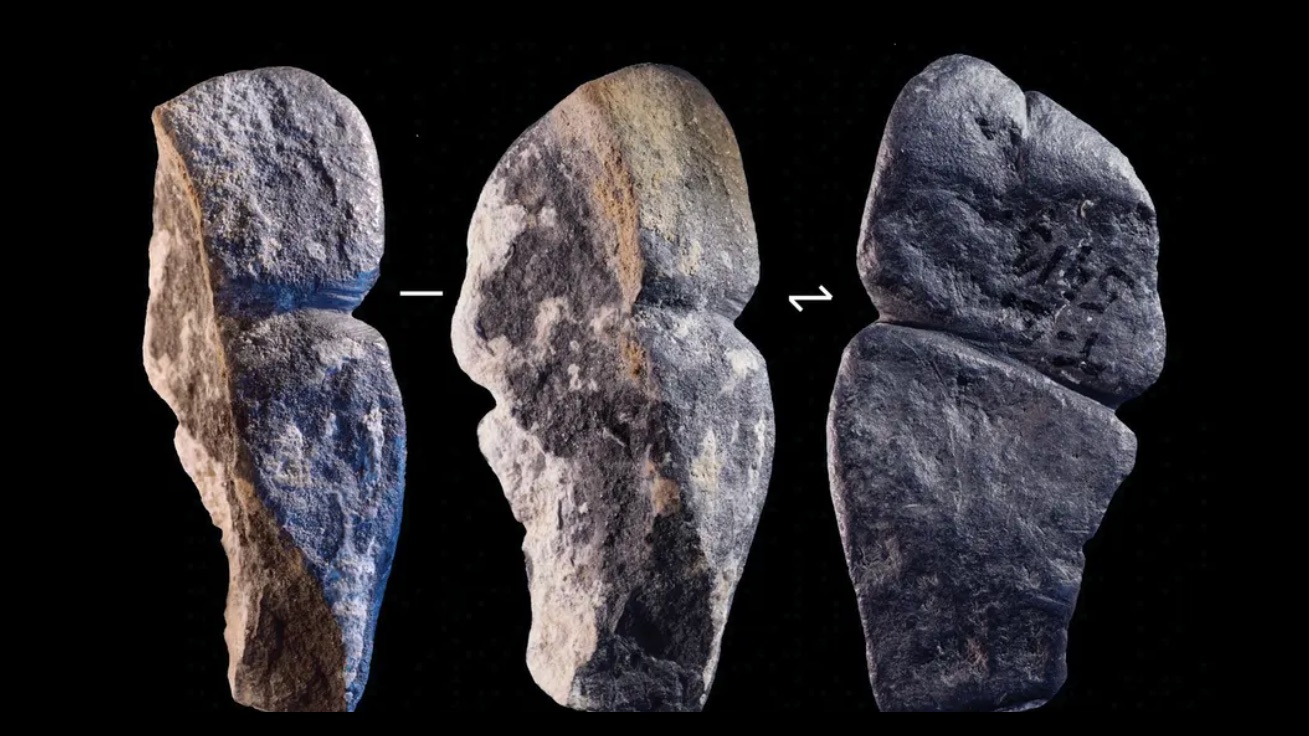42,000-year-old anatomically accurate penis pendant is the world's earliest known depiction of human genitalia
A carved object depicting a penis is likely the oldest known piece of phallic art in the world.

A penis-shaped pendant carved out of a chunk of graphite is likely the oldest known phallic artifact in the world.
Archaeologists in northern Mongolia discovered the 1.7-inch-long (4.3 centimeters) object in 2016 at a site known as Tolbor-21 located in the Khangai Mountains. The piece has been part of the collection at the Mongolian Academy of Sciences ever since, according to a study published June 12 in the journal Scientific Reports.
After conducting radiocarbon dating of organic material from the same layer and microscopic analysis, researchers determined that the Paleolithic artifact was made approximately 42,000 years ago and that an ancient artisan used graphite acquired from roughly 62 miles (100 kilometers) away to make the anatomically accurate piece.
"Graphite was a rare material and was not commonly used in this region during that time period," study lead author Solange Rigaud, an archaeologist at the University of Bordeaux and the National Center for Scientific Research (CNRS) in France, told Live Science. "It came from far away and probably was exchanged by a different group of nomadic people."
Related: 6-inch stone penis was used to sharpen weapons in medieval Spain
The researchers think the piece's maker used stone tools to carve the pendant, which includes a groove depicting the penis' urethra, the tube that carries urine. There's an additional groove crossing the pendant's midsection that likely would've been used to tie the piece to the wearer, possibly as a necklace, according to the study.
The pendant is partially broken but overall in good condition. "The face of the pendant is well preserved while the opposite side has more wear," Rigaud said. This could be due to the worn side rubbing against the wearer, who would've "suspended the pendant around the neck," Rigaud added.
Sign up for the Live Science daily newsletter now
Get the world’s most fascinating discoveries delivered straight to your inbox.
The team said that this pendant is not just the world's oldest known phallic artwork but the "earliest known sexed anthropomorphic representation" on record, as it predates other carvings of human genitalia, including cave art of vulvas from 37,000 years ago at Abri Castanet in France.
However, researchers haven't concluded what the overall meaning behind the piece is.
"It's hard to know its exact function," Rigaud said. "It's possible that this person wore a body ornament as a way to transmit information to others showing their group identity, or it held a personal meaning to the wearer."
While this is likely the oldest known artifact with a "phallic presentation" in the world, Rigaud said it's not the oldest body ornament. Archaeologists across Eurasia have unearthed personal ornaments derived from animal teeth and perforated shells at sites that date between 130,000 and 150,000 years old, according to the study. These sites were once inhabited by Neanderthals.
In addition to the phallic pendant, archaeologists also unearthed a pendant and beads made from ostrich eggshells, additional stone pendants and pieces of animal bones at the archaeological site.
Jennifer Nalewicki is former Live Science staff writer and Salt Lake City-based journalist whose work has been featured in The New York Times, Smithsonian Magazine, Scientific American, Popular Mechanics and more. She covers several science topics from planet Earth to paleontology and archaeology to health and culture. Prior to freelancing, Jennifer held an Editor role at Time Inc. Jennifer has a bachelor's degree in Journalism from The University of Texas at Austin.









